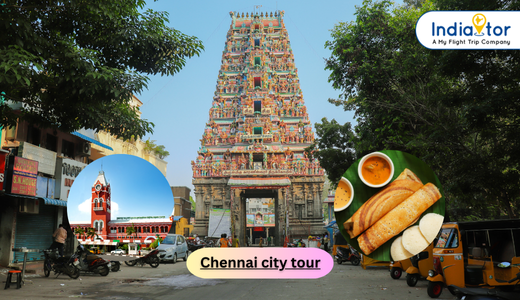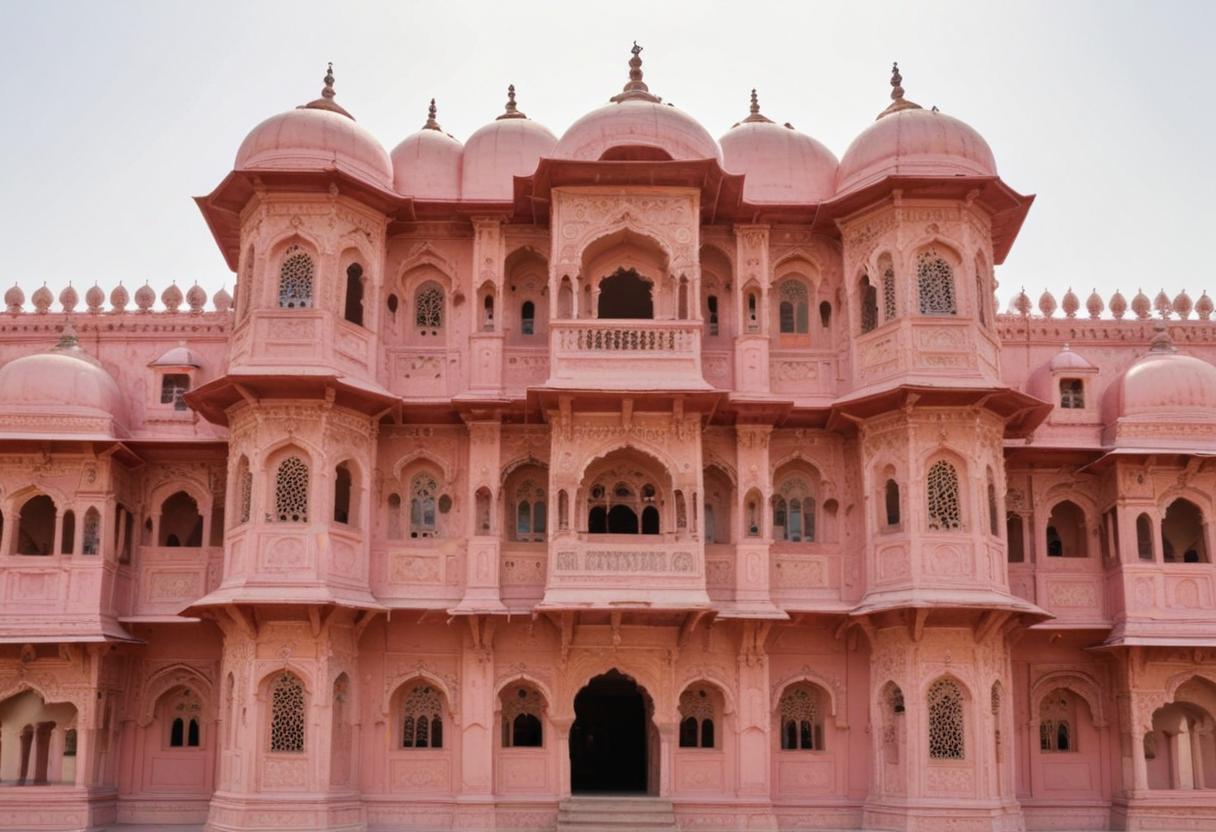-
Table of Contents
Discover the divine in these 10 sacred sites worldwide.
Introduction:
Sacred sites hold immense cultural, historical, and spiritual significance for people around the world. These places are often revered as sacred due to their association with religious beliefs, ancient rituals, or legendary events. From ancient temples to natural wonders, the world is dotted with numerous sacred sites that attract pilgrims, tourists, and spiritual seekers alike. In this article, we will explore ten must-visit sacred sites around the world, each offering a unique glimpse into the rich tapestry of human spirituality and heritage.
The Ancient Wonder: Exploring the Mysteries of Machu Picchu
Machu Picchu, located high in the Andes Mountains of Peru, is one of the most fascinating and mysterious ancient sites in the world. This sacred site, built by the Inca civilization around the 15th century, is a testament to the ingenuity and architectural prowess of its creators. Today, it stands as a UNESCO World Heritage site and attracts thousands of visitors each year who come to explore its wonders and unravel its mysteries.
As you make your way up the steep and winding path to Machu Picchu, you can’t help but be in awe of the breathtaking views that surround you. The site is nestled amidst lush green mountains and offers panoramic vistas of the Urubamba River below. It’s no wonder that the Inca chose this location to build their sacred city, as it provides a sense of tranquility and connection to the natural world.
Upon entering Machu Picchu, you are immediately struck by the precision and craftsmanship of the stone structures that make up the site. The Inca were master builders, and their ability to fit massive stones together without the use of mortar is truly remarkable. The most famous structure at Machu Picchu is the Intihuatana, a stone pillar that served as a solar clock and calendar for the Inca. It is believed that this sacred stone was used for astronomical observations and rituals.
One of the enduring mysteries of Machu Picchu is its purpose. While it is widely accepted that it served as a religious and ceremonial center for the Inca, there is still much debate among archaeologists and historians about its exact function. Some believe that it was a retreat for Inca rulers, while others think it was a pilgrimage site for worshippers. Regardless of its purpose, there is no denying the spiritual energy that permeates the air at Machu Picchu.
Exploring the site, you will come across various temples and terraces that were used for religious ceremonies and agricultural purposes. The Temple of the Sun, with its perfectly carved stone walls and windows, is particularly awe-inspiring. It is believed to have been a place of worship for the Inca sun god, Inti, and is aligned with the winter solstice, when the sun shines directly through one of its windows.
Another intriguing feature of Machu Picchu is its intricate system of water channels and fountains. The Inca were masters of hydraulic engineering, and their ability to bring water from natural springs to every corner of the city is a testament to their advanced knowledge. The fountains at Machu Picchu are not only functional but also beautifully designed, with intricate carvings and sculptures.
As you wander through the ruins of Machu Picchu, you can’t help but feel a sense of reverence and wonder. This ancient site, with its rich history and stunning architecture, is truly a must-visit for anyone interested in exploring the mysteries of the past. Whether you are a history buff, a spiritual seeker, or simply someone who appreciates the beauty of ancient civilizations, Machu Picchu will leave an indelible mark on your soul. So, pack your bags, put on your hiking boots, and embark on a journey to this ancient wonder. You won’t be disappointed.
Spiritual Serenity: Unveiling the Beauty of Angkor Wat
Angkor Wat, located in Siem Reap, Cambodia, is undoubtedly one of the most breathtaking sacred sites in the world. This magnificent temple complex, built in the 12th century, is not only a UNESCO World Heritage site but also the largest religious monument on Earth. Its grandeur and spiritual significance make it a must-visit destination for those seeking spiritual serenity.
As you approach Angkor Wat, you are immediately struck by its sheer size and architectural brilliance. The temple’s intricate carvings and towering spires are a testament to the Khmer Empire’s architectural prowess. The entire complex spans over 400 acres, with the main temple rising majestically above a vast moat. The sight of Angkor Wat at sunrise or sunset is truly awe-inspiring, as the golden rays of the sun illuminate the temple’s silhouette, creating a magical ambiance.
Beyond its architectural marvels, Angkor Wat holds deep spiritual significance for the Cambodian people. Originally built as a Hindu temple dedicated to the god Vishnu, it later transformed into a Buddhist site. Today, it serves as a place of worship and pilgrimage for both Hindus and Buddhists alike. The fusion of these two religions is evident in the temple’s design, with Hindu deities and Buddhist symbols coexisting harmoniously.
Exploring Angkor Wat is like stepping back in time. As you wander through its labyrinthine corridors and courtyards, you can’t help but feel a sense of tranquility and reverence. The temple’s intricate bas-reliefs depict scenes from Hindu mythology and historical events, offering a glimpse into the rich cultural heritage of the Khmer Empire. Each carving tells a story, inviting visitors to delve deeper into the mysteries of the past.
One of the most iconic features of Angkor Wat is its central tower, which represents Mount Meru, the mythical abode of the gods in Hindu cosmology. Climbing to the top of this tower is a spiritual journey in itself. As you ascend the steep steps, you leave behind the earthly realm and enter a realm of spiritual enlightenment. From the summit, you are rewarded with panoramic views of the surrounding landscape, including the lush jungles and the moat that encircles the temple.
While Angkor Wat is undoubtedly a popular tourist destination, it still manages to retain its spiritual essence. The temple complex is vast enough to accommodate large crowds, allowing visitors to find moments of solitude and reflection. Whether you choose to meditate in one of the temple’s quiet corners or simply sit and absorb the energy of the place, Angkor Wat offers a sanctuary for spiritual seekers.
Visiting Angkor Wat is not just about admiring its architectural beauty; it is a transformative experience that touches the soul. The serenity and spirituality that permeate the air make it a place where one can find solace and connect with something greater than oneself. It is a reminder of the enduring power of faith and the beauty that can be found in ancient traditions.
In conclusion, Angkor Wat is a testament to the ingenuity and devotion of the Khmer Empire. Its grandeur, spiritual significance, and historical importance make it a must-visit sacred site for anyone seeking spiritual serenity. From its awe-inspiring architecture to its intricate carvings, every aspect of Angkor Wat invites visitors to embark on a journey of self-discovery and contemplation. So, if you are in search of a place that will leave you in awe and touch your soul, make sure to include Angkor Wat on your list of must-visit sacred sites around the world.
Divine Majesty: Discovering the Grandeur of the Taj Mahal
The Taj Mahal, located in Agra, India, is undoubtedly one of the most iconic and breathtaking sacred sites in the world. Built in the 17th century by Emperor Shah Jahan as a mausoleum for his beloved wife Mumtaz Mahal, this architectural masterpiece is a testament to eternal love and devotion. Its grandeur and beauty have made it a UNESCO World Heritage Site and a symbol of India’s rich cultural heritage.
As you approach the Taj Mahal, you are immediately struck by its sheer size and magnificence. The white marble structure stands tall against the clear blue sky, creating a mesmerizing sight that leaves visitors in awe. The intricate detailing on the walls and domes is a testament to the skilled craftsmanship of the artisans who worked on this marvel.
Stepping inside the Taj Mahal, you are greeted by a serene and peaceful atmosphere. The interior is adorned with delicate carvings and precious gemstones, adding to its ethereal beauty. The main chamber houses the tombs of Shah Jahan and Mumtaz Mahal, with verses from the Quran inscribed on the walls, reminding visitors of the spiritual significance of this sacred site.
The Taj Mahal is not only a testament to love but also a symbol of architectural brilliance. The symmetrical design and perfect proportions of the structure are a marvel in themselves. The four minarets that surround the main dome add to its grandeur, while the reflecting pool in front creates a stunning mirror image, enhancing the overall visual appeal.
Visiting the Taj Mahal during sunrise or sunset is a truly magical experience. As the sun’s rays hit the marble surface, it changes color, creating a mesmerizing play of light and shadow. The tranquil gardens surrounding the mausoleum provide a peaceful retreat, allowing visitors to reflect and appreciate the beauty of this sacred site.
Beyond its architectural splendor, the Taj Mahal holds deep cultural and historical significance. It is a symbol of the Mughal Empire, which once ruled over a vast part of the Indian subcontinent. The intricate blend of Persian, Islamic, and Indian architectural styles reflects the cultural diversity and artistic brilliance of that era.
Today, the Taj Mahal attracts millions of visitors from around the world who come to witness its divine majesty. It is not just a tourist attraction but also a place of pilgrimage for many. The spiritual aura that surrounds the Taj Mahal is palpable, and it is not uncommon to see visitors offering prayers and seeking blessings at this sacred site.
In conclusion, the Taj Mahal is a true marvel that showcases the grandeur of human creativity and devotion. Its architectural brilliance, cultural significance, and spiritual aura make it a must-visit sacred site for anyone seeking to discover the wonders of the world. Standing in front of this majestic monument, one cannot help but be humbled by its beauty and the enduring love story it represents. The Taj Mahal truly deserves its place among the top sacred sites around the world.In conclusion, there are numerous sacred sites around the world that are worth visiting for their historical, cultural, and spiritual significance. These sites offer a unique opportunity to explore the rich traditions and beliefs of different civilizations. Whether it’s the awe-inspiring beauty of Angkor Wat in Cambodia, the spiritual serenity of the Vatican City in Italy, or the ancient ruins of Machu Picchu in Peru, each sacred site offers a glimpse into the profound connection between humanity and the divine. Exploring these must-visit sacred sites can be a transformative experience, allowing visitors to gain a deeper understanding of the world’s diverse religious and cultural heritage.



